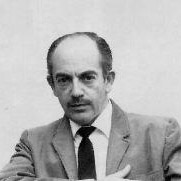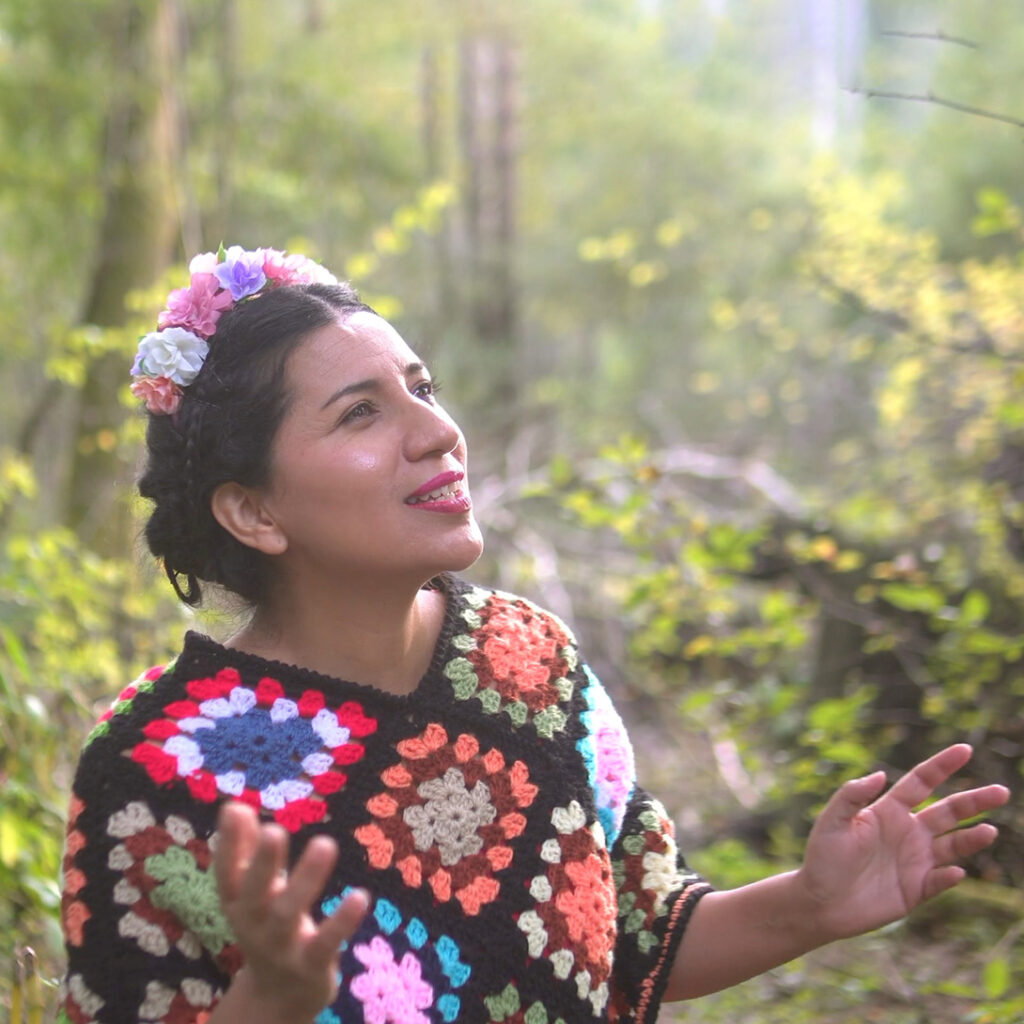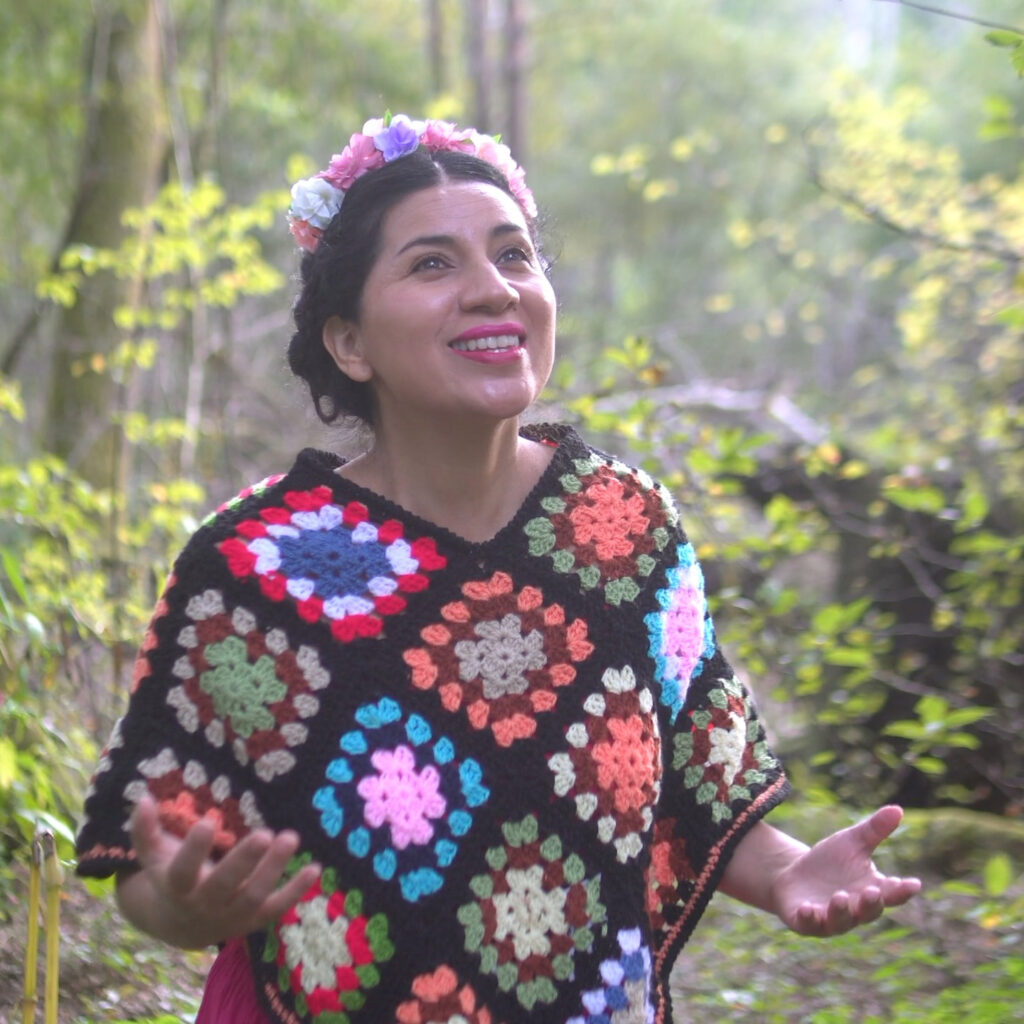“Ihcuac Laneci” It is a composition by the Mexican composerSalvador Moreno, inspired by the poetry and pre-Hispanic worldview of the Mexica cultures. The title in Nahuatl means “when it dawns”, referring to the moment when the sun rises and a new day begins, a key concept in Aztec mythology. The work fuses elements of traditional indigenous Mexican music with contemporary techniques, using native instruments and rhythms to evoke the spiritual link between nature, the cosmos and humanity, characteristic of the worldview of pre-Columbian cultures.
Video Release
Ihcuac Laneci – Salvador Moreno
Patricia Trujano Granados – About WordPress
Andreas Wagner – About WordPress
Alexander Uhl – video
audio recording in Vienna – Patricia Trujano Granados
when it dawns
“Ihcuac Laneci” It is a fascinating work by the Mexican composerSalvador Moreno (1916–1999) that deeply reflects the cultural roots of Mexico. The title of the composition, innahuatl, means “when it dawns”, referring to the moment of dawn and the beginning of a new day, a central concept inaztec cosmology. This theme is closely linked to the worldview of pre-Hispanic cultures., where the daily cycle of the sun was of vital importance. Moreno's work is presented as both a musical and spiritual experience, reinterpreting the ancient traditions of Mexican civilizations in a modern language.

Context and inspiration
Salvador Moreno was not only a composer, but also writer and musicologist, always showing great interest in the pre-Columbian cultures of Mexico and its rich mythology. This interest is clearly reflected in“Ihcuac Laneci”, that evokes indigenous poetry and the Aztec conception of the cosmic cycle of life. The Aztecs believed that the gods must continually recreate the sun so that life on Earth could continue., which turned dawn into a moment of profound transcendence. Moreno takes this symbology and translates it into musical language in a poetic way..
Musical structure and elements
The composition is characterized by the masterful fusion of traditional Mexican music with modern compositional techniques. Moreno usesindigenous instruments, like drums and flutes, typical of pre-Hispanic music, and integrates these sounds into a contemporary structure. The rhythms and melodies evoke ceremonial music, creating an atmosphere of ritual and mysticism.
A central element of the work is the alternation between moments of stillness and movement, reflecting the gradual transition from the darkness of night to the light of dawn. Through recurring motifs and rhythmic variations, The constant flow of life is illustrated, as the Aztec cultures understood it.
Meaning and influence
“Ihcuac Laneci” It is not only a tribute to the pre-Hispanic cultures of Mexico, but also an attempt to reconcile the country's modern identity with its indigenous roots. Salvador Moreno was part of a group of composers who, in the middle of the 20th century, They sought to express national identity through music, Inspired by Mexico's cultural past.
The work has been performed both in Mexico and internationally., contributing to the revival of interest in pre-Hispanic musical tradition. Moreno, with pieces like “Ihcuac Laneci”, managed to put these sounds and concepts in a contemporary context, making them accessible to a wider audience.
“Ihcuac Laneci” It is a remarkable example of how music can serve as a bridge between the past and the present.. In this work, Salvador Moreno manages to unite the spiritual and cultural depth of the Aztec worldview with the resources of modern music, creating a composition that is both musically impressive and culturally significant.
Salvador Moreno Manzano

(1916–1999) was a composer, Mexican writer and musicologist, originally from Orizaba, Veracruz. He studied music in Mexico and Europe, particularly in Paris, where he was nourished by avant-garde influences. Moreno is known for his interest in Mexico's cultural identity., capturing in his works elements of pre-Hispanic history and mythology, as well as Mexican traditions.
He composed operas, chamber music, choral and symphonic works, standing out for the fusion of indigenous sounds with modern techniques. Also, He was a prolific essayist and art critic, which made him a key figure in the Mexican cultural panorama of the 20th century.














